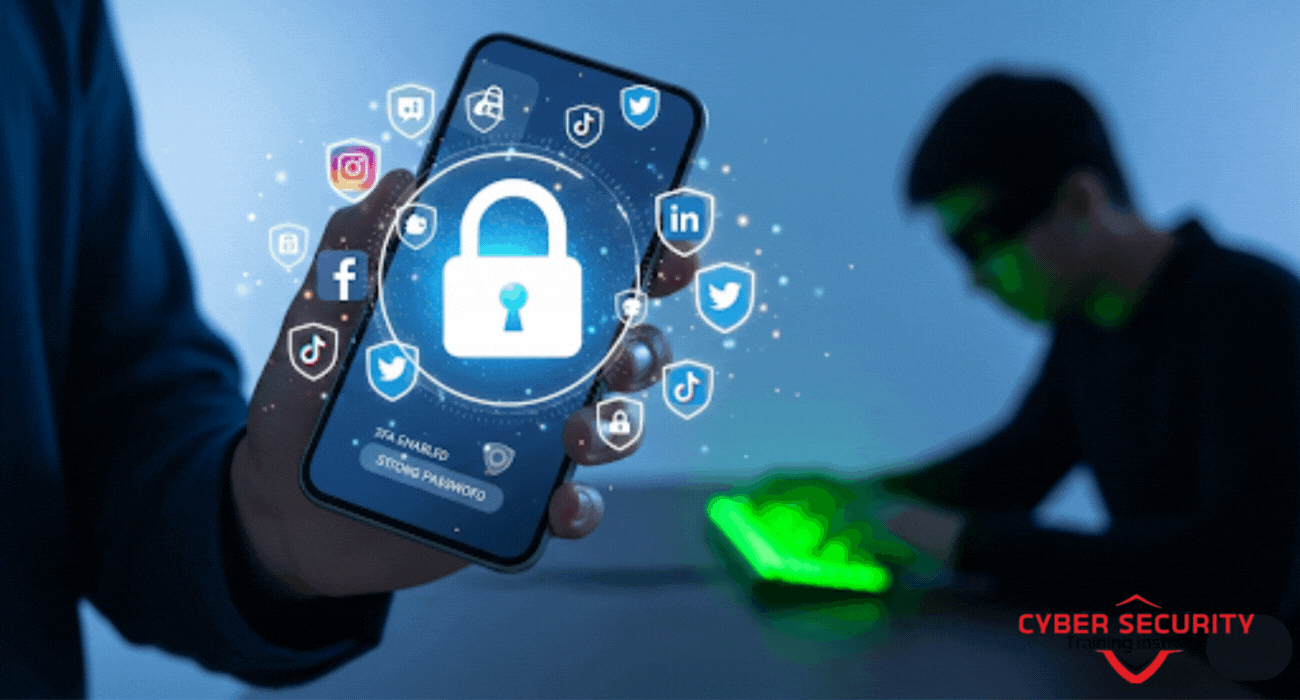5 Ways to Secure Your Social Media from Hackers
In today’s digital age, social media is a big part of our lives. We share photos, connect with friends, and even promote our businesses online. But with all this activity, hackers are lurking, ready to exploit any weakness in your accounts. A hacked social media account can lead to stolen personal information, embarrassing posts, or even financial loss. The good news? You can take simple steps to protect yourself. In this blog post, we’ll walk you through five practical ways to secure your social media accounts from hackers, explained in a way that’s easy for everyone to understand. Let’s dive in and keep your online presence safe!

5 Ways to Secure Your Social Media from Hackers
In today’s digital age, social media is a big part of our lives. We share photos, connect with friends, and even promote our businesses online. But with all this activity, hackers are lurking, ready to exploit any weakness in your accounts. A hacked social media account can lead to stolen personal information, embarrassing posts, or even financial loss. The good news? You can take simple steps to protect yourself. In this blog post, we’ll walk you through five practical ways to secure your social media accounts from hackers, explained in a way that’s easy for everyone to understand. Let’s dive in and keep your online presence safe!
Table of Contents
- Use Strong, Unique Passwords
- Enable Two-Factor Authentication (2FA)
- Be Cautious with Third-Party Apps
- Watch Out for Phishing Scams
- Regularly Monitor and Update Account Settings
- Conclusion
- Frequently Asked Questions
Use Strong, Unique Passwords
One of the easiest ways hackers get into social media accounts is through weak or reused passwords. If your password is something like “password123” or the same one you use for your email, you’re making it easy for them. A strong password is your first line of defense.
Here’s how to create a secure password:
- Make it long—at least 12 characters.
- Include a mix of uppercase letters, lowercase letters, numbers, and symbols (like @ or #).
- Avoid personal info like your name, birthdate, or “1234.”
- Use a unique password for each social media platform.
Struggling to come up with a strong password? Try a passphrase—a sentence you can remember, like “SunnyHills2023!” or use a password manager to generate and store complex passwords for you. Tools like LastPass or 1Password can keep track of your passwords securely, so you don’t have to memorize them all.
Why unique passwords? If a hacker gets your password from one site (say, a shopping website), they’ll try it on your social media accounts. Using different passwords stops this domino effect.
| Weak Password Example | Strong Password Example |
|---|---|
| john123 | J0hn!H1lls2023 |
| password | P@ssw0rd#Secure9! |
Enable Two-Factor Authentication (2FA)
Two-factor authentication, or 2FA, adds an extra layer of security to your account. Even if a hacker gets your password, they can’t log in without the second “factor”—usually a code sent to your phone or email. Think of it like a double lock on your front door.
Most social media platforms, like Instagram, Facebook, and Twitter, offer 2FA. Here’s how to set it up:
- Go to the security settings of your account.
- Look for “Two-Factor Authentication” or “Login Verification.”
- Choose a method—text message, authenticator app (like Google Authenticator), or email.
- Follow the prompts to link your phone or app.
Authenticator apps are safer than text messages because hackers can sometimes intercept SMS codes. Apps like Authy or Microsoft Authenticator generate codes on your phone, even offline. Enable 2FA on every platform you use—it’s like wearing a seatbelt for your online accounts.
Be Cautious with Third-Party Apps
Ever used a fun quiz app or a tool to see who unfollowed you on Instagram? These third-party apps often ask for access to your social media account, and some aren’t trustworthy. Hackers can create fake apps to steal your login details or post spam from your account.
Here’s how to stay safe:
- Only connect apps from reputable developers. Check reviews and ratings.
- Review the permissions an app requests. Does a photo-editing app really need to post on your behalf?
- Regularly check which apps have access to your account. On Facebook, go to Settings > Apps and Websites. On Instagram, it’s Settings > Apps and Websites.
- Remove any apps you no longer use or don’t recognize.
Think of third-party apps like houseguests—only let in the ones you trust, and kick out anyone who’s overstayed their welcome.
| Weak Password Example | Strong Password Example |
|---|---|
| john123 | J0hn!H1lls2023 |
| password | P@ssw0rd#Secure9! |
Watch Out for Phishing Scams
Phishing is when hackers trick you into giving them your login details, often through fake emails, messages, or websites that look real. For example, you might get an email saying your account is “locked” and you need to log in to fix it. The link takes you to a fake page that steals your password.
How to spot and avoid phishing:
- Check the sender’s email address. Official emails from platforms like Instagram won’t come from random domains like “@instagramsupport.xyz.”
- Hover over links (don’t click!) to see the real URL. If it looks suspicious, don’t visit it.
- Never enter your password on a page you reached through an email or message link.
- If you’re unsure, go directly to the platform’s official website or app to check your account.
Phishing is like a wolf in sheep’s clothing—it looks harmless but can cause serious damage. Stay skeptical and double-check everything.
Regularly Monitor and Update Account Settings
Hackers are sneaky, and sometimes you won’t know they’ve accessed your account until it’s too late. Regularly checking your account settings can help you catch suspicious activity early.
Steps to stay on top of your account security:
- Check login activity. Platforms like Facebook and Twitter show where and when your account was accessed. Look for unfamiliar devices or locations.
- Update your password every 6–12 months, even if you think it’s secure.
- Review privacy settings to control who sees your posts and personal info.
- Enable login alerts to get notified if someone logs in from an unrecognized device.
Monitoring your account is like checking your car’s oil—it’s a small habit that prevents big problems down the road.
Conclusion
Securing your social media accounts doesn’t have to be complicated. By using strong, unique passwords, enabling two-factor authentication, being cautious with third-party apps, watching out for phishing scams, and regularly monitoring your account settings, you can significantly reduce the risk of being hacked. These five steps are practical and effective, even for beginners. Start implementing them today to protect your online presence and enjoy social media with peace of mind. Stay proactive, stay safe, and keep those hackers at bay!
Frequently Asked Questions
What is a strong password?
A strong password is at least 12 characters long, includes a mix of uppercase and lowercase letters, numbers, and symbols, and avoids easily guessable information like your name or birthdate.
Why do I need a unique password for each account?
Using the same password across multiple accounts means if one gets hacked, hackers can try it on your other accounts, like social media or banking.
How does two-factor authentication work?
Two-factor authentication requires a second step (like a code sent to your phone) in addition to your password to log in, making it harder for hackers to access your account.
Is 2FA safe with text messages?
Text message 2FA is better than nothing, but authenticator apps like Google Authenticator are safer because hackers can sometimes intercept SMS codes.
What are third-party apps?
Third-party apps are tools or services that connect to your social media account, like quiz apps or scheduling tools, often requiring access to your profile or posts.
How do I know if a third-party app is safe?
Check the app’s reviews, ratings, and developer reputation. Be wary if it asks for unnecessary permissions, like posting on your behalf.
What is phishing?
Phishing is when hackers send fake emails, texts, or links pretending to be a trusted company to trick you into sharing your login details.
How can I spot a phishing email?
Look for suspicious sender addresses, generic greetings, or urgent requests to log in. Hover over links to check the URL, and never enter your password on a linked page.
What should I do if I think I clicked a phishing link?
Change your password immediately, enable 2FA, and check your account for suspicious activity. Contact the platform’s support if needed.
Why should I check my login activity?
Checking login activity helps you spot unauthorized access, like logins from unfamiliar devices or locations, so you can take action quickly.
How often should I change my password?
Change your password every 6–12 months or immediately if you suspect a security breach.
What is a password manager?
A password manager is a tool that generates, stores, and autofills strong passwords for you, like LastPass or 1Password, keeping them secure.
Can hackers get into my account even with 2FA?
It’s much harder, but not impossible. Hackers could use advanced phishing or intercept SMS codes, which is why authenticator apps are recommended.
What should I do if my account is hacked?
Change your password, enable 2FA, revoke third-party app access, and contact the platform’s support team to recover your account.
Are public Wi-Fi networks safe for social media?
Public Wi-Fi can be risky. Use a VPN (virtual private network) to encrypt your connection and avoid logging in on unsecured networks.
Why do hackers target social media accounts?
Hackers may want to steal personal info, spread spam, scam your followers, or use your account for malicious activities like spreading malware.
Can I use the same 2FA app for multiple accounts?
Yes, authenticator apps like Google Authenticator or Authy can manage 2FA codes for multiple accounts in one place.
What are login alerts?
Login alerts notify you (via email or text) when someone logs into your account from an unrecognized device or location.
Should I share my social media login with anyone?
No, never share your login details, even with trusted friends or family, as it increases the risk of unauthorized access.
How do I make my social media posts more private?
Adjust your privacy settings to limit who can see your posts, avoid sharing sensitive info, and review tagged posts before they appear on your profile.
What's Your Reaction?
 Like
0
Like
0
 Dislike
0
Dislike
0
 Love
0
Love
0
 Funny
0
Funny
0
 Angry
0
Angry
0
 Sad
0
Sad
0
 Wow
0
Wow
0













